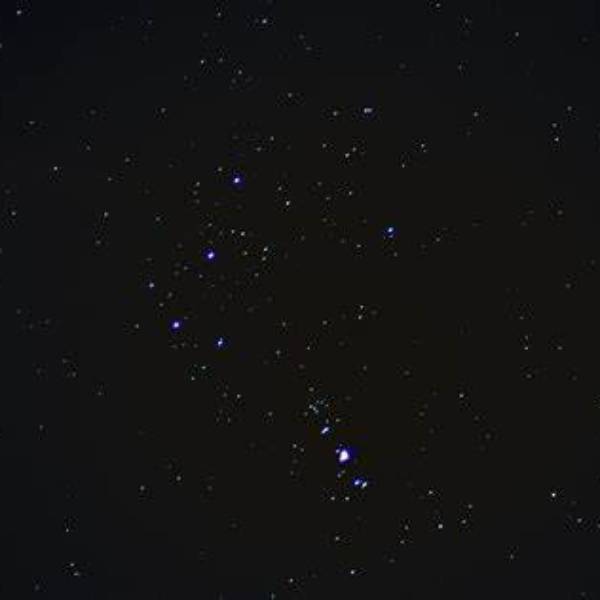Introduction to the Big Dipper and Orion’s Belt
The Iconic Constellations: Big Dipper and Orion’s Belt
Big Dipper and Orion’s Belt are two of the most recognizable constellations that grace the night sky. These celestial formations are not only significant in the field of astronomy but also hold cultural importance across various societies. Each constellation presents unique features that draw the attention of stargazers and amateur astronomers alike. The Big Dipper, with its distinctive shape, and Orion’s Belt, with its three prominent stars, are easily identifiable even to the naked eye. Understanding the characteristics and stories behind these constellations enhances the experience of exploring the cosmos, adding depth to the appreciation of the night sky’s beauty.

Enriching the Cosmos Observation Experience
The knowledge of constellations like Big Dipper and Orion’s Belt enriches the experience of observing the cosmos. These formations serve as navigational markers for stargazers, helping to locate other celestial bodies and understand the vastness of space. The cultural significance of these constellations adds an additional layer of intrigue, as they are often woven into myths and legends from around the world. By learning about their positions, patterns, and the stories they inspire, observers can develop a deeper connection with the night sky. This understanding transforms a simple gaze into a journey through the universe’s rich tapestry of stars, myths, and scientific marvels.
Exploring the Big Dipper
The Big Dipper, a prominent part of the Ursa Major constellation, is composed of seven bright stars. These stars are arranged in a pattern that resembles a ladle or dipper, making it easily recognizable in the night sky. Throughout history and across various cultures, people have relied on this constellation for navigational purposes. The two stars at the end of the “dipper” act as pointers towards Polaris, also known as the North Star. This alignment makes the Big Dipper an indispensable tool for travelers and explorers, helping them determine their direction and navigate their journeys.
The Big Dipper holds significant importance in celestial navigation. Its distinctive shape and the strategic positioning of its stars have made it a reliable guide for those traversing both land and sea. The constellation’s role in directing travelers towards the North Star has solidified its place in the annals of navigational history. Whether used by ancient mariners or modern-day stargazers, the Big Dipper continues to serve as a beacon in the sky, illustrating the practical applications of astronomy in everyday life. Its utility as a navigational aid underscores the enduring relevance of the night sky’s constellations to human exploration and discovery.
Understanding Orion’s Belt
Orion’s Belt: A Distinctive Night Sky Pattern
Orion’s Belt is characterized by three prominent stars aligned in a straight line, a feature of the Orion constellation. These stars, known as Alnitak, Alnilam, and Mintaka, form a pattern that is easily identifiable against the backdrop of the night sky. The distinctive arrangement of these stars makes Orion’s Belt a sought-after sight for many. Its beauty and clarity captivate stargazers, who often seek it out for its striking appearance and the ease with which it can be found among the celestial landscape.

The Allure of Orion’s Belt in the Night Sky
The allure of Orion’s Belt lies in its simplicity and the way it stands out in the night sky. The three stars that comprise the belt—Alnitak, Alnilam, and Mintaka—create a visual triangle that is both beautiful and clear, even to the naked eye. This constellation’s prominence has made it a favorite among astronomers and casual sky watchers alike. Its visibility serves not only as a point of interest but also as a guide for locating other celestial objects. Orion’s Belt’s prominence in the night sky underscores the enduring fascination humans have with the cosmos and the stories woven into the stars above.
Cultural Significance of the Big Dipper and Orion’s Belt
Throughout history, many civilizations have revered the Big Dipper Orion’s Belt. Native American tribes often told stories linked to these constellations. Ancient Egyptians associated Orion with Osiris, their god of the afterlife. Similarly, the Big Dipper held importance in various myths. These celestial patterns served as guidance and symbols of navigation.
How to Locate the Big Dipper and Orion’s Belt
Locating constellations like the Big Dipper and Orion’s Belt is a straightforward task for beginners in astronomy. To begin, seek out the Big Dipper in the northern sky, which is most visible during the spring and summer months. This constellation serves as a reliable starting point due to its distinctive shape and brightness. Just as finding constellations like Orion’s Belt guides stargazers, achieving a black belt empowers women in their martial arts journey. Once you’ve found the Big Dipper, use its two outer stars, known as the pointers, to locate Polaris, also known as the North Star. This star is a constant in the northern sky and helps with further navigation.
Identifying Orion’s Belt in the Winter Sky
After mastering the location of the Big Dipper, the next step is to search for Orion’s Belt, which is prominently visible in the winter months. This constellation is composed of three bright stars that form a straight line, making them easily identifiable even for novice stargazers. The brightness of these stars ensures that Orion’s Belt stands out against the night sky, providing a clear marker for further exploration of the celestial sphere. By following these simple steps, beginners can enhance their stargazing experience and develop a deeper appreciation for the cosmos.

Big Dipper and Orion’s Belt in Modern Astronomy
Locating constellations like the Big Dipper and Orion’s Belt is a straightforward task for beginners in astronomy. To begin, seek out the Big Dipper in the northern sky, which is most visible during the spring and summer months. This constellation serves as a reliable starting point due to its distinctive shape and brightness. Navigating the night sky can be as straightforward as locating constellations; similarly, the HSGI Battle Belt offers an intuitive way to carry essential gear. Once you’ve found the Big Dipper, use its two outer stars, known as the pointers, to locate Polaris, also known as the North Star. This star is a constant in the northern sky and helps with further navigation.
Identifying Orion’s Belt in the Winter Sky
After mastering the location of the Big Dipper, the next step is to search for Orion’s Belt, which is prominently visible in the winter months. This constellation is composed of three bright stars that form a straight line, making them easily identifiable even for novice stargazers. The brightness of these stars ensures that Orion’s Belt stands out against the night sky, providing a clear marker for further exploration of the celestial sphere. By following these simple steps, beginners can enhance their stargazing experience and develop a deeper appreciation for the cosmos.
The Future of Stargazing: Big Dipper and Orion’s Belt
As technology advances, stargazing becomes more accessible. Applications now help identify constellations like the Big Dipper and Orion’s Belt. These tools encourage more people to engage with astronomy. Increased awareness of the night sky promotes science education. Orion’s Belt points to it, inspiring a new generation to explore the wonders of the universe through accessible technology and stargazing applications. Everyone can appreciate these celestial wonders, bridging gaps between technology and nature.
Conclusion: The Timeless Connection to the Night Sky
Big Dipper and Orion’s Belt serve as reminders of our connection to the universe. These constellations offer a glimpse into the past and future of our exploration. Observing them sparks curiosity about the cosmos. Stargazing invites individuals to share experiences with friends and family. Ultimately, Big Dipper Orion’s Belt remains a timeless fascination for all.



